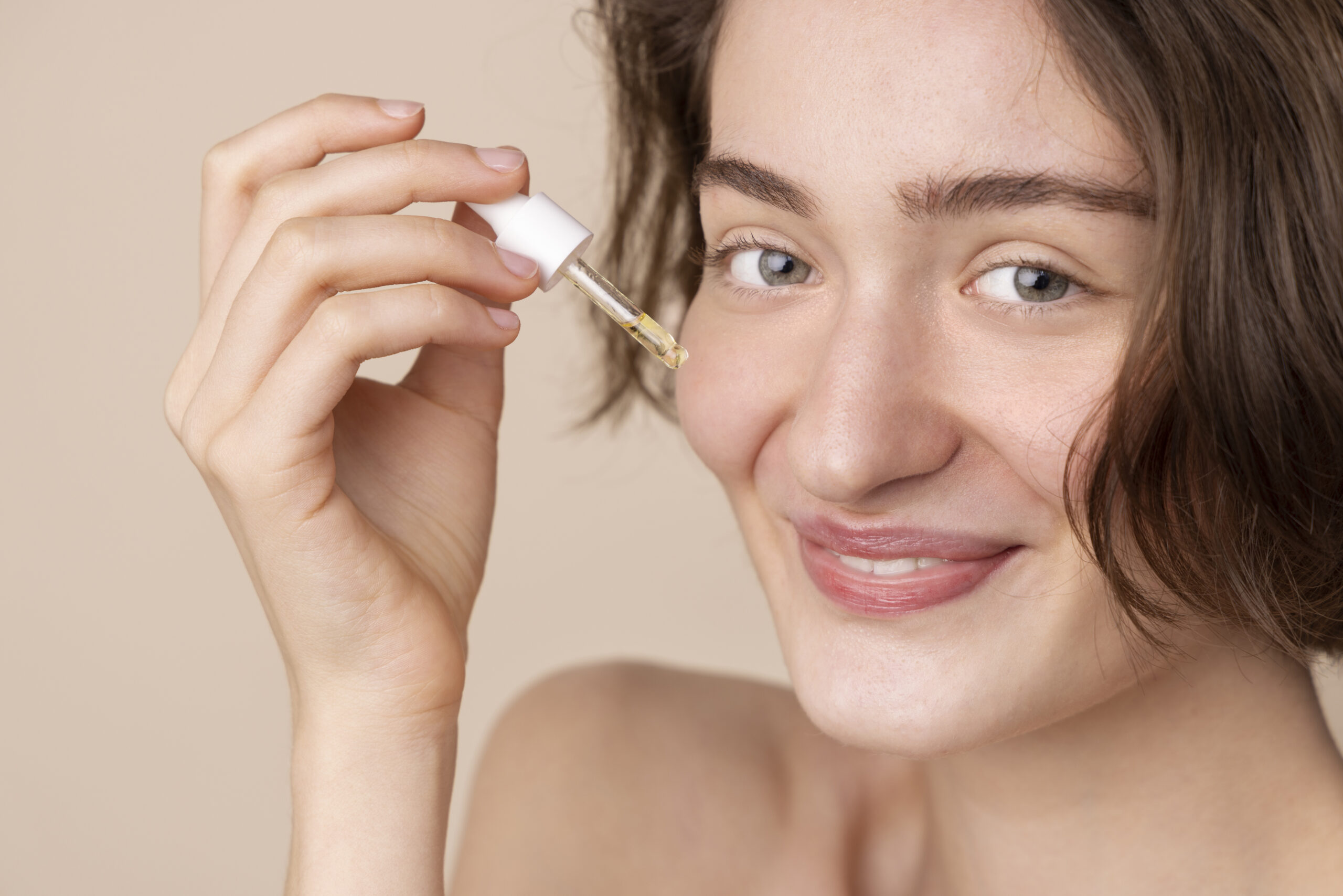Retinol has long been crowned the gold standard of anti-ageing ingredients in skincare. Dermatologists and even beauty lovers laud it because of its outstanding capacity to erase the fine lines, hyperpigmentation, and create radiant and youthful-appearing skin. However, to people with sensitive skin, this potent ingredient may be too overwhelming. Many people may not want to give it a try due to the fear of redness, peeling and irritation. Fortunately, not every retinol product is made the same. Even sensitive skin types have the potential to enjoy the transformative effects of retinol with a proper method, concentration, and formulation without irritation. The secret to identifying the best retinol for sensitive skin is the understanding of what makes a retinol product gentle yet effective.
Knowing about Retinol and Its Mechanism
It is imperative to know how this ingredient works before delving into the reasons why some retinol products are appropriate when applied to sensitive skin. Retinol is the derivative of vitamin A, and it is converted to retinoic acid, the active form, which helps in increasing the rate at which the skin cells turn over and enhances the production of collagen when applied to the skin. This will aid in the renewal of the skin surface, unclogging of the pores, and eventually enhancing the texture. Nevertheless, the same mechanism may be irritating at times, particularly to skin that is already sensitive. The accelerated cell renewal may cause a temporary disruption of the skin barrier, which results in dryness, flaking or redness. This is why it is so significant to select a soft formula that is aimed at the delicate skin.
Why Sensitive Skin Responds to Retinol
The sensitive skin is more reactive in nature due to the fact that its barrier capability is usually affected. It does not retain moisture easily, and it has a problem with keeping irritants off. In cases of exogenous retinol supplementation, it is this delicate barrier that can get flooded by the sudden surge of exfoliation. What follows is what is usually referred to as retinol burn redness, tightness and peeling. Nevertheless, these reactions do not always happen. Irritation can be greatly eliminated by the formulation of the right product. Encapsulation of retinol, buffering, and the addition of calming agents such as niacinamide, ceramides, or hyaluronic acid are all essential in reducing the side effects and retaining the effect of retinol.
Why is a Retinol Product So Appropriate to Use on Sensitive Skin?
The most acceptable retinol to use on sensitive skin is not always the strongest one, but the most balanced one. Gentle retinol formulas are made to contain the active ingredient slowly so that the skin can get used to it. In the case of encapsulated retinol, vitamin A is presented in microcapsules that dissolve gradually, thereby reducing the shock that vitamin A would otherwise cause to the skin. Also, low concentrations of about 0.1 to 0.3 are the best points to start with sensitive users. Formulation support is another important factor. Glycerin, panthenol, and squalane are some ingredients that maintain hydration and replenishment of the lipid barrier so that the benefits of retinol are experienced without irritation. The labels of fragrance-free, alcohol-free, and comedogenic are also good indicators of the suitability of the fragile skin type.
Gradually Swapping to the Use of Retinol
Retinol needs time and should be introduced gradually into a sensitive skincare routine. The less is more principle is indeed apt in this case. Dermatologists usually suggest that one should start with a pea-sized amount of oil and then apply thrice or twice weekly, but as the skin develops tolerance, the frequency of application should be increased. To further limit irritation, retinol can be applied over a moisturiser as a technique called buffering without any serious impacts on its efficacy. This will enable the skin to reap the long-term advantages of retinol but reduce the risk of reaction in the short term. As it adapts over time, the skin barrier increases in strength and resistance, allowing increased levels provided one wishes.
The Major Soothing Ingredients to use with retinol
The most suitable retinol for sensitive skin hardly works independently. This is its effectiveness and tolerability, which is dependent on the synergy of supportive ingredients. Niacinamide, a vitamin B3, is another vitamin that is commonly found in the company of retinol as it helps improve the strength of the skin wall and lessen the inflammation. Lipids are naturally occurring ceramides which assist in replacing and retaining moisture, which the retinol dries. Another staple is hyaluronic acid, which provides the skin with intense hydration that makes the skin plump and calmed. Moreover, free radicals can be neutralised with the help of antioxidants such as vitamin E and green tea extract, and the overall process of reparation can be improved. When these components are combined, they form a calming effect, enabling retinol to act prominently without causing sensitivity.
The Prescription vs. the Over-the-Counter Retinol
In the case of sensitive skin, over-the-counter (OTC) retinol products tend to be the safer place of entry. These formulae are less concentrated and, in most cases, they include other calming components. Stronger prescription retinoids, like tretinoin or adapalene, may have faster results, but they also have a greater chance of causing irritation. Individuals who are sensitive to skin might opt to start with the OTC products to develop tolerance before they can consider stronger products under the guidance of a dermatologist. Other contemporary recipes of prescription retinoids, such as newer adapalene gel, are less irritating than old tretinoin, and can be used with some sensitive skin phenotypes. However, the principle of the slow introduction and the non-aggressive care is the same.
Night Routine and Aftercare
The retinol should be used in the evening since it may render the skin more sensitive to light. Users are advised to cleanse first before applying the product and allow the skin to dry completely before applying the lotion, since wet skin enhances absorption and the chances of irritation. It is necessary to use an enriching, hydrating moisturiser in the follow-up to avoid the loss of moisture and to strengthen the skin barrier. Sunscreen becomes a necessity during the day. Every morning, one should use broad-spectrum SPF 30 or higher because the skin with a thin layer of retinol is more susceptible to UV-induced damage. This ratio of nighttime healing and daytime guarding has the advantage of enabling the retinol to safely and efficiently perform its magic with time.
Estimated Outcomes and Attainable Deadlines
After all, having retinol may be thrilling due to the promise of a sleeker and lighter tone, but they should in no way rush when it comes to sensitive skin. The positive results are evident in six to twelve weeks of regular use. At the beginning, a small number of users complain of slight dryness or peeling – a normal symptom that cell renewal is speeding up. With time, fine lines start blurring away, dark spots start reducing, and the overall skin colour becomes more even. The process is slow but fulfilling since, in addition to improving surface looks, retinol is able to firm the inner layers of the skin.
Consultation with the professional
The most sensitive skin retinol can still become irritated when used improperly or used together with rough exfoliants. In case of persistent redness, swelling or burning, one should break and give the skin a rest. Changing the feed to a softer formula or slowing down the frequency can solve these problems. Nevertheless, when symptoms do not disappear, it is best to visit a dermatologist. A practitioner may prescribe tailor-made regimens, provide an alternative to prescription, or identify existing underlying sensitivities that could be enhancing the response. Individualised treatment would make your retinol a positive addition to your skin care experience instead of a frustration.
Conclusions: The Retinol Sensitive Skin Power
Finding the most suitable retinol to use on the sensitive skin involves the matter of balance – balance between effectiveness and comfort, strength and mildness. The current science in skincare has developed to provide advanced formulations that provide retinol with its age-defying effects without affecting the health of the skin. Even the most sensitive skin will have a smoother and more refined texture, improved pores, and a glowing complexion by using items with encapsulated technology, strengthening ingredients, and low concentrations. The trick here is to introduce it gradually, provide protection and drink consciously. As time goes by, sensitive skin might actually evolve into a perfect match to the transformational touch of retinol, and this is how the beauty, as well as gentleness, can perfectly co-exist.





